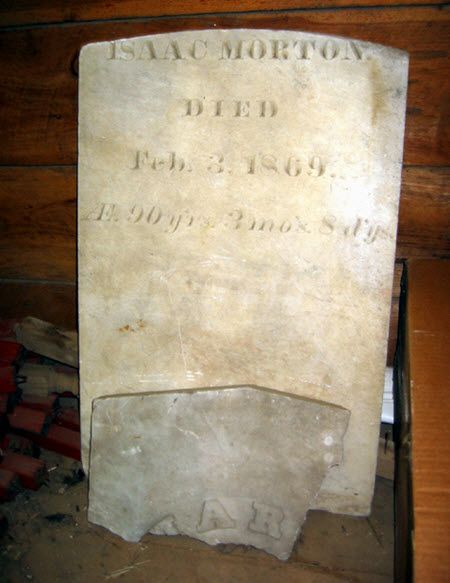Gilman Folsom - The Early Years
Lorrie O'Connor shares photos and research on the Folsom Farm and Seed Company
Part 1

“It’s a tombstone” gasped my teen-age farm hand as he pulled up a piece of granite we found under an old porch deck on the farm my husband purchased in 1992. Those words launched my twenty year quest to discover the history of the Folsom Seed Co. and the mystery of the tombstone.
Soon after we moved into the farm, we were welcomed to Raymond by several “old-timers” who asked, “You the new folks up on the old Folsom place?” They commented that the piece of property we had purchased—7 ½ acres, had been in the Folsom Family for generations. They went on to say that Frank Folsom, the last of the Folsoms to work the farm, had lived to be 100 years old.
These revelations struck a chord with me. Although my husband was a city boy, I was born and raised on our family farm in Illinois. I’m descended from a long line of Irish farmers. When I left the farm at age 18 to go off to college, I vowed I would never live on the farm again.
By the time we moved to New Hampshire, I had matured enough and had lived enough places to appreciate my farmer roots. Buying this farm sprang from my longing to reconnect with my roots and my ancestors. When we realized we had bought a “family farm,” we chose to honor that history by continuing to call it Folsom Farm.
When I found the grave stone, I felt an urge to know more about the family who had established this farm and kept it in the family for generations. I also wanted to find out whose stone it was and where it belonged so I could return it to it’s proper place. Currently, I know whose stone it is and have a guess about where it should be, but don’t know if it can be returned.
Part 2
Gilman Folsom moved to Raymond in May, 1839 when he purchased what was then the R.R. Rundlett property on Nottingham Road, according to an excerpt from Rev. Joseph Fullonton’s History of Raymond, published in 1875. It goes on to say:
“Mechanics had lived there, and the farm had been neglected so that it looked like "the vineyard of the slothful," but it has been changed to great productiveness. It cost him some $1,600. Garden seeds have been among the chief products. The Nursery  and other parts have been extensive. Mr. Folsom and son are doing much business. The house cost $3,000 when work and materials were cheap.”
and other parts have been extensive. Mr. Folsom and son are doing much business. The house cost $3,000 when work and materials were cheap.”
Gilman Folsom’s early history is equally as interesting. From the Genealogy of the Folsom Family (1875), we learn that Gilman was the 6th generation descendant of John Folsom, who emigrated from Hingham, England in 1638 and settled in Hingham, Mass. It was the second generation of his family who migrated to Exeter, NH.
Gilman’s parents were Ezekiel Folsom and Mary Norris of Epping. They were married in 1778. Gilman was the youngest of their three children. The Folsom Genealogy comments that “Ezekiel left home on account of pecuniary and domestic troubles and is supposed to have died in Montreal, Canada” about 1817. Gilman would have been around age 12 when his father died. What we don’t know is how old he was when his father left home. Mary, and presumably Gilman, were likely “taken in” by the Norris and Folsom families at various times.
In March 1822, Mary Folsom, who is reported to be living in the Durham home of James Folsom, marries Capt. Isaac Morton. This is the name on the tombstone we found under the porch. At the time of her remarriage to Isaac Morton, Mary was age 44 and Gilman was age 17. Capt. Morton was age 68 when he married Mary Folsom and lived just 2 years until his death in Sept. 1824. This was also his second marriage. He was buried in Portsmouth beside his first wife, Anna.
Mary moved back to Newmarket, then to Epping, and finally to Raymond about the time Gilman married Betsey Norris of Epping and purchased the farm in Raymond.
